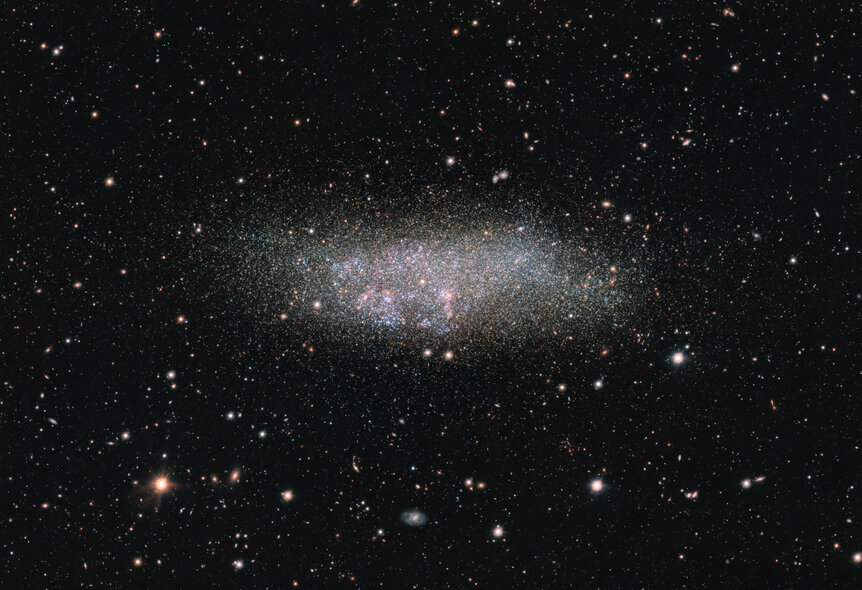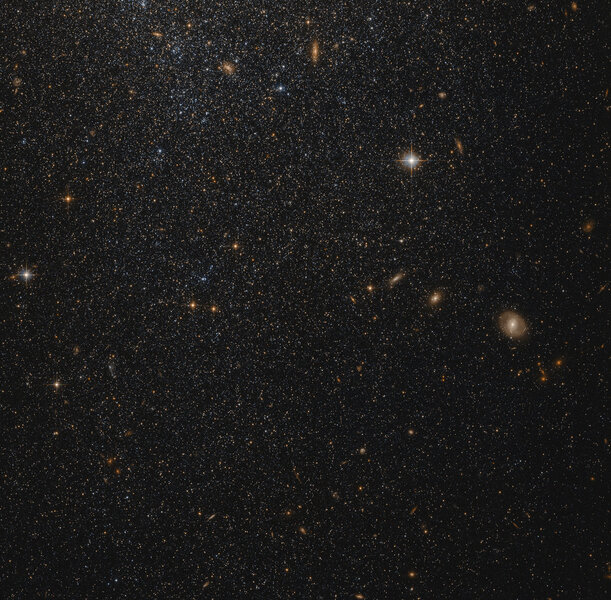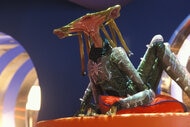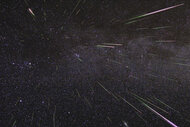Create a free profile to get unlimited access to exclusive videos, sweepstakes, and more!
The loneliest (nearby) galaxy
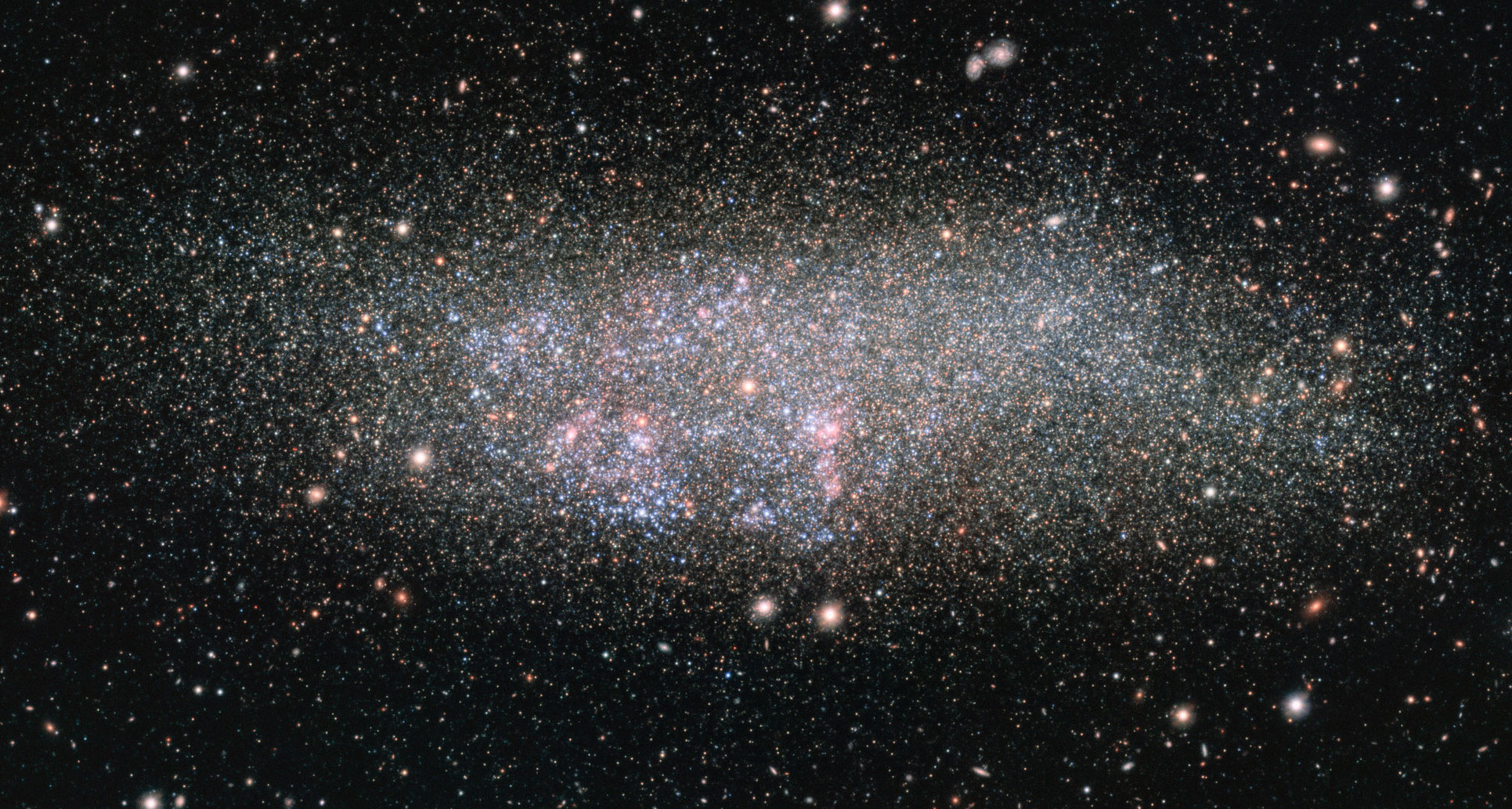
Our Milky Way galaxy is a sprawling, vast collection of dark matter, gas, dust, and hundreds of billions of stars.
And it’s not alone. It is a member of a small collection of about 50 galaxies called the Local Group. The Milky Way and the great spiral Andromeda dominate the other galaxies in size; most are tiny dwarf galaxies, a few billion stars or less. The Local Group itself is somewhat dumbbell-shaped, with many of these smaller galaxies clumped around either us or Andromeda.
But some are more far-flung than others. The dwarf irregular galaxy called Wolf–Lundmark–Melotte (or WLM for short) is on the very outskirts of the Local Group. Distance measurements for it vary, but it’s likely about 3 million light-years away from both us and Andromeda.
At first glance, it looks like any of a thousand other dwarf galaxies we’ve seen dotting the sky.
But mysteries lurk in this lonely galaxy. For one thing, its isolation is interesting; its nearest neighbor is another dwarf a million light-years away (most of the bright stars you see in the image are inside our own galaxy; we have to look through the Milky Way to see WLM … and you can see quite a few far more distant galaxies in the background, too). WLM truly is isolated, and it’s possible it has never had a significant interaction with another galaxy in its entire existence. By comparison the Milky Way has collided with many galaxies over its life and is, in fact, consuming several smaller galaxies even right now.
Another is that very deep images have shown that WLM has a halo of old, red stars around it, stars that are 9 billion years old or more; the oldest stars seen are a whopping 12 billion years old. Big galaxies have stellar haloes, but in the Local Group WLM is the only dwarf that has one that’s been detected.
I was also surprised to see that it’s still actively forming stars — those pink regions in the first image are gas clouds, lit from within by massive stars blasting out copious amounts of ultraviolet light, energizing the hydrogen in the clouds like (literally) a neon sign. A study of WLM showed that the star formation today is limited to a region across the middle of the galaxy, in what looks like a bar: a rectangular structure commonly seen in big galaxies and sometimes in smaller ones. Bars can form due to the overall gravitational field of the galaxy; the gravity from stars spread out over a large volume can generate them. Bars can feed gas into small regions, which may be how stars are still forming there.
But that same study revealed that more than half of the stars in WLM formed more than 9 billion years ago in an initial burst of star birth. Then the rate declined over the next 7 billion years or so. A couple of billion years ago it rose again, but it’s not clear why. Interactions with other galaxies can trigger that, but in this case, as I wrote above, that’s unlikely.
The star birth history was found by studying the abundance of heavy elements in WLM — ones like carbon, iron, and oxygen. Most galaxies formed when the Universe was young, when only hydrogen and helium were around. Any heavy elements (astronomers lump everything heavier than helium into a group they just call “metals”) were made in stars, so the amount can tell you a lot about the history of the galaxy. Even today, WLM is very deficient in metals: it has about 1/10th the amount of them than we find in the Sun (which is used as a standard reference) and is the lowest metallicity galaxy in the Local Group that’s still forming stars.
WLM is a nice little lab for astronomers — a possibly unspoiled example of a pristine galaxy untouched since the Universe itself began. And it turns out to be interesting, even surprising! Astronomy teaches us this lesson well: Never mistake size for importance, and never overlook anything, even if it lurks in the shadows of crowds. They have a story to tell too.
P.S. Curious, I poked around the Hubble archive to see what images were taken of WLM, surprised that I didn’t see any online. Despite this being an interesting galaxy, and several papers being published on it, no public color images had been published. There were a few Hubble observations, so I told Judy Schmidt about them; she is a gifted Hubble-image-putter-togetherer. She created the image above for me! Amazing work. Thanks, Judy! And y’all should check out her other work, too.
